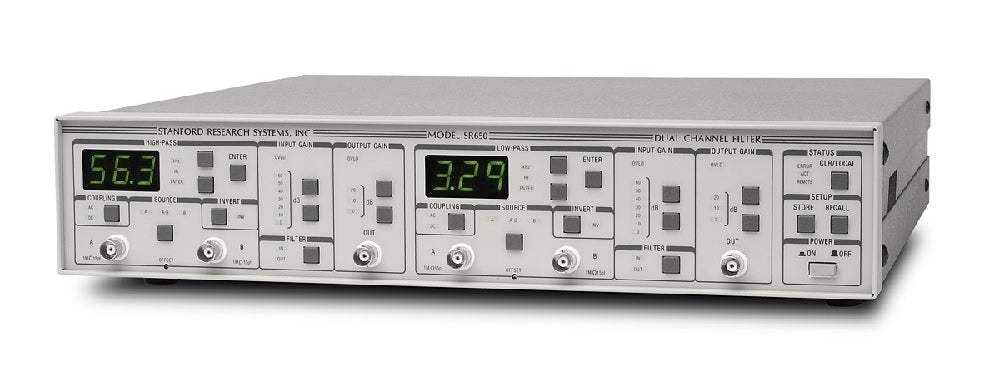

On the Stanford Research Systems SR650, each instrument channel has a low-noise preamplifier, a precision high-pass or low-pass filter section, and an output amplifier. The filters are 8-pole, 6-zero elliptic-type with 115 dB per octave rolloff, 0.1 dB of passband ripple, and 80 dB stopband attenuation. Cutoff frequencies can be set between 1 Hz and 100 kHz, making the SR650 ideal for applications including anti-aliasing, audio analysis, and general frequency-domain signal conditioning.
Inputs and Preamplifiers
Each filter channel has a floating, differential input with 1 MΩ input impedance and 6 nV/√Hz of input noise. The analog ground for each filter channel is available at a rear-panel BNC connector to provide complete flexibility in grounding. The filter grounds may be tied to the instrument’s chassis ground or to any other point. Both AC and DC input coupling can be selected, and an invert key allows the phase of the signal to be shifted by 180° with a single key press. Up to 60 dB of preamplifier gain can be specified in 10 dB increments. A simple offset adjust screw lets you null DC components in your signal.
Model No
SR650
Condition
Used
Manufacturer
Stanford Research
Type
Variable
Hey👋Let's start with your email